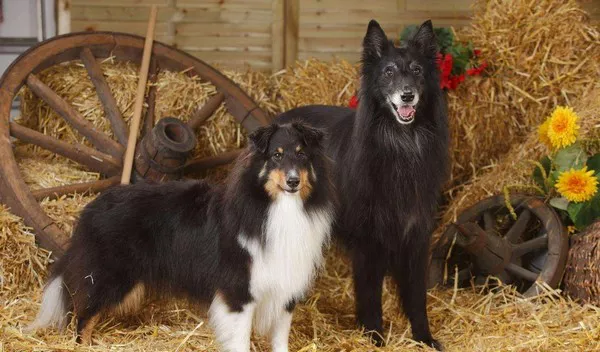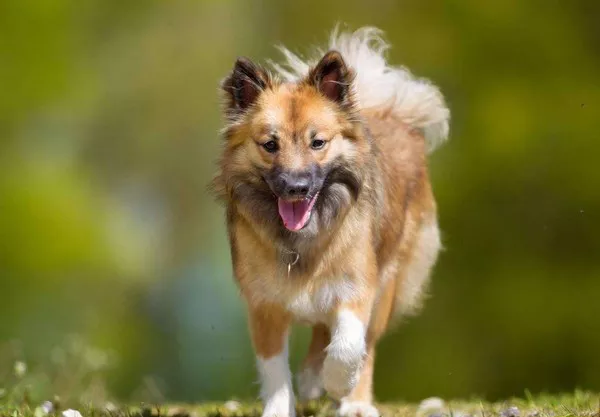The Alaskan Klee Kai, a strikingly beautiful and energetic dog breed, has garnered attention in recent years for its wolf-like appearance, intelligence, and compact size. As a relatively new breed, the Alaskan Klee Kai is often considered a perfect choice for families looking for a small, active companion with an independent streak. But before committing to this fascinating breed, it’s important to assess whether an Alaskan Klee Kai truly makes a good pet. In this article, we will explore the breed’s history, temperament, exercise needs, grooming requirements, and potential challenges to help you decide if an Alaskan Klee Kai is the right dog for you.
History of the Alaskan Klee Kai
The Alaskan Klee Kai was developed in the 1980s by Linda Spurlin, a breeder from Alaska, who wanted to create a smaller version of the Siberian Husky. Spurlin worked to develop a breed that had the same striking looks and energetic personality of the Husky, but in a more manageable size for apartment living and smaller households. The Alaskan Klee Kai is closely related to the Husky, but it is a distinct breed with its own set of characteristics.
The name “Klee Kai” comes from an Inuit word meaning “small dog,” reflecting the breed’s diminutive size compared to its larger relatives. The breed’s initial development included crossing several smaller northern dog breeds, such as the Alaskan Malamute and the Siberian Husky. Over time, the breed has gained recognition, and it is now recognized by the American Kennel Club (AKC) under its Foundation Stock Service.
Physical Characteristics
Size and Appearance
The Alaskan Klee Kai is known for its striking resemblance to the larger Siberian Husky. It has the same upright ears, thick double coat, and a fox-like face, complete with a well-defined mask around its eyes. However, the Alaskan Klee Kai is significantly smaller, making it better suited to homes with limited space.
The breed comes in three size categories:
Toy: 13 to 15 inches tall and weighs between 10 to 15 pounds.
Miniature: 15 to 17 inches tall and weighs between 16 to 22 pounds.
Standard: 17 to 20 inches tall and weighs between 22 to 40 pounds.
Despite their small stature, these dogs have a strong, muscular build and appear much larger than their weight might suggest, thanks to their thick, double-layered coat.
Coat and Colors
Alaskan Klee Kais have a beautiful double coat that requires regular maintenance. The outer coat is medium-length and dense, designed to protect them from cold weather, while the undercoat is soft and insulating. The coat comes in a variety of colors, including black, grey, red, and pure white, often with distinct markings that accentuate their wolf-like features.
These dogs have a striking facial mask, which can be in a variety of patterns, and their eyes are often almond-shaped and can be blue, brown, or even one of each.
Grooming Requirements
Due to their double coat, Alaskan Klee Kai dogs shed heavily twice a year, during the spring and fall. Regular brushing can help manage the shedding, but during these shedding periods, expect a significant amount of hair to be shed. Brushing a few times a week during non-shedding periods will help to reduce loose fur, keep their coat shiny, and prevent matting.
In addition to brushing, it’s essential to keep their ears clean and their nails trimmed. Alaskan Klee Kai dogs are generally clean and have minimal odor, but regular bathing is recommended, particularly after outdoor play or exercise.
Temperament and Personality
Independent Yet Affectionate
One of the key traits of the Alaskan Klee Kai is its independent nature. While these dogs are very loyal to their families and can be affectionate with their owners, they tend to be less needy compared to other breeds. They enjoy their personal space and can be aloof, especially around strangers. Early socialization is crucial for this breed, as they can become reserved or even territorial if not properly introduced to new people and situations.
Despite their independent streak, Alaskan Klee Kai dogs are known for being playful and enjoy spending time with their family members. They tend to form strong bonds with their owners and thrive in environments where they receive consistent attention and affection. They are intelligent and can be trained well, but they may need some extra patience during the training process due to their stubbornness.
High Energy and Playfulness
Alaskan Klee Kai dogs are very energetic, which is a trait they share with their larger relatives, the Siberian Huskies. They require regular exercise to keep them healthy and happy. Daily walks, along with opportunities to run and play, are essential for this breed. Without enough physical and mental stimulation, they may become bored and engage in undesirable behaviors such as excessive barking, digging, or chewing.
Their playful nature makes them excellent companions for active individuals or families with older children. They enjoy games like fetch and running in the yard, and they can be particularly fast and agile. However, because of their independent nature, they may not always follow commands immediately, so consistent training and patience are key.
Socialization and Interaction
Socialization is particularly important with the Alaskan Klee Kai. They tend to be wary of strangers and may be reserved or even aloof when meeting new people. However, with early and proper socialization, they can become more comfortable in social situations. It’s important to expose them to different environments, people, and other animals when they are puppies, as this helps them develop well-rounded personalities.
These dogs are known to be somewhat territorial, which can sometimes lead to aggressive behaviors if they feel threatened by another dog or a stranger. However, they are generally good with children and can make excellent family pets if raised in the right environment.
Health Considerations
Longevity and Common Health Issues
The Alaskan Klee Kai is a relatively healthy breed, with a typical lifespan of 12 to 16 years. Like all breeds, however, they are susceptible to certain health problems. Some common health issues that may affect the breed include:
Patellar Luxation: This is a condition where the kneecap dislocates, which can cause pain and difficulty walking.
Hip Dysplasia: This condition, which affects the hip joints, can cause discomfort and arthritis over time.
Progressive Retinal Atrophy (PRA): This is a genetic condition that causes degeneration of the retina, which can lead to blindness.
Hypothyroidism: An underactive thyroid can lead to weight gain, lethargy, and skin issues.
Routine veterinary check-ups are crucial to ensure that any potential health problems are detected early and addressed promptly. Maintaining a balanced diet and regular exercise routine is also vital for the overall health of the dog.
Exercise and Activity Needs
As previously mentioned, the Alaskan Klee Kai is a highly energetic breed. They require daily exercise to stay healthy and prevent boredom. Regular walks, runs, and play sessions are essential for this breed to burn off excess energy. These dogs can be excellent companions for joggers, hikers, or people who enjoy outdoor activities. However, it’s important to note that they can be escape artists, so a secure, fenced-in yard is highly recommended if you plan to allow them to play outside unsupervised.
While they do enjoy exercise, the Alaskan Klee Kai does not have the stamina of the larger Husky, so intense activities in hot weather should be avoided. Their thick double coat can make them prone to overheating, so it’s important to be mindful of their physical limits, especially in warmer climates.
Training the Alaskan Klee Kai
Training an Alaskan Klee Kai can be both rewarding and challenging. These dogs are intelligent and can pick up on commands quickly, but their independent nature may make them less eager to please compared to other breeds. They are not typically motivated by food or treats, which can make training sessions more difficult. Positive reinforcement, including praise and play, is often the most effective method.
Consistency is key when training an Alaskan Klee Kai, as they can be stubborn and may try to test boundaries. Early training is essential, and it’s important to establish leadership and set clear expectations. Obedience classes are a good way to socialize and train your dog, and they can also provide the structure that an Alaskan Klee Kai needs to thrive.
Potential Challenges of Owning an Alaskan Klee Kai
While the Alaskan Klee Kai can make a great pet for the right family, there are a few challenges to consider before bringing one into your home:
High Energy: These dogs are not suited to sedentary lifestyles. They require regular exercise and mental stimulation to stay happy. If you’re not prepared to provide them with enough physical activity, they may become destructive or restless.
Independent Nature: The Alaskan Klee Kai has a strong independent streak and may not always follow commands or behave in ways that are expected. This can make training a bit more challenging, especially for first-time dog owners.
Grooming Needs: Their thick double coat requires regular grooming to prevent matting and manage shedding. During shedding seasons, this can become quite time-consuming.
Socialization: The breed can be reserved or even aggressive with strangers if not properly socialized. It’s important to expose them to new experiences, people, and pets early in life.
Health Issues: Like all breeds, Alaskan Klee Kai dogs are prone to certain health problems. Regular veterinary care is necessary to monitor their health and catch any issues early.
Conclusion
The Alaskan Klee Kai can make a wonderful pet for the right person or family. If you are an active individual or family who enjoys outdoor activities and is willing to commit to regular exercise and training, this breed may be an excellent fit for you. They are intelligent, loyal, and affectionate, but they also require consistency, patience, and attention to their needs.
Before deciding to adopt an Alaskan Klee Kai, it’s important to carefully consider their exercise requirements, grooming needs, and socialization challenges. With proper care, this energetic and strikingly beautiful breed can become a cherished companion for many years.
If you are ready for an active, independent, and intelligent dog, the Alaskan Klee Kai could be the perfect addition to your family.
Related Topics:






















